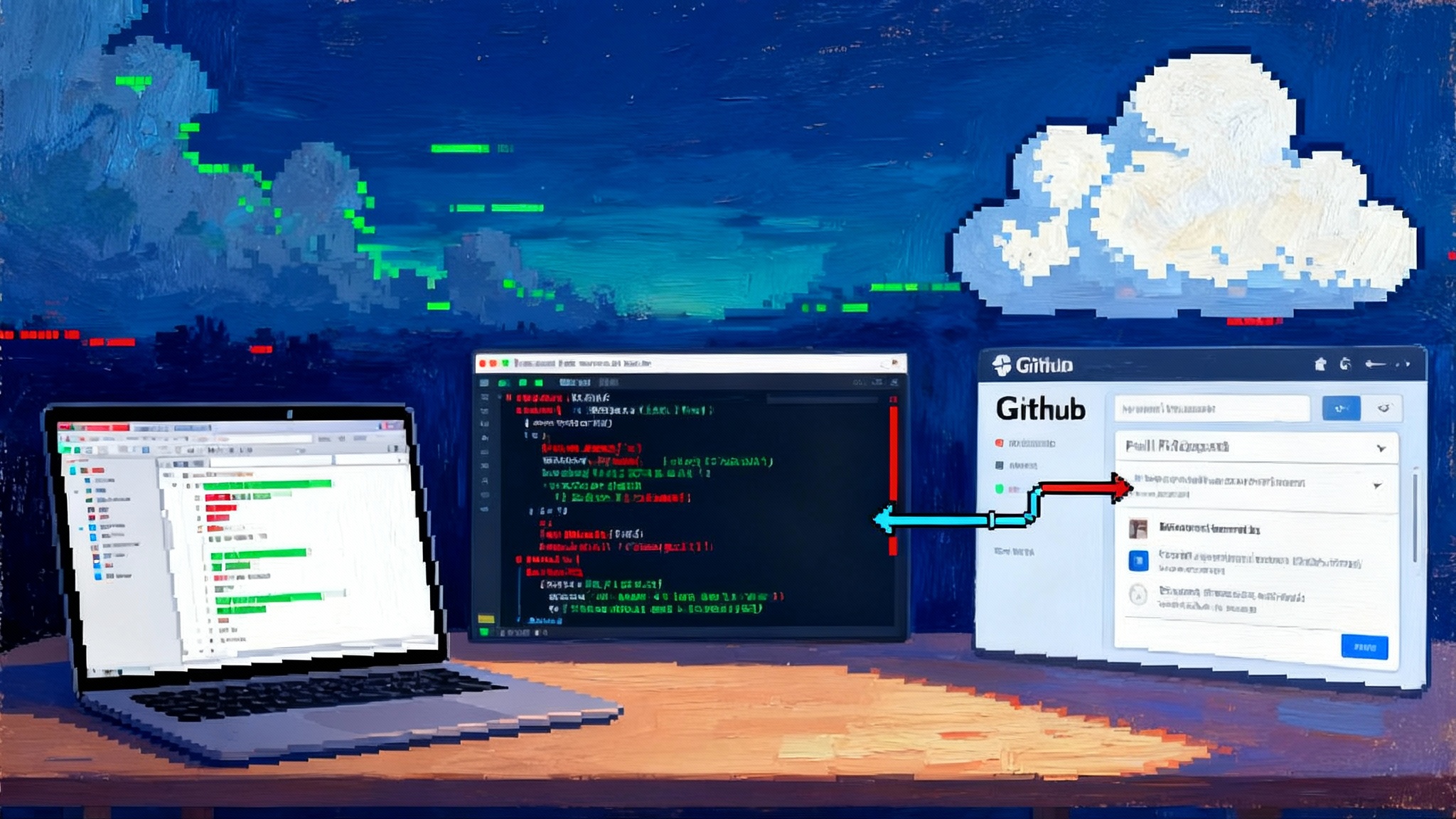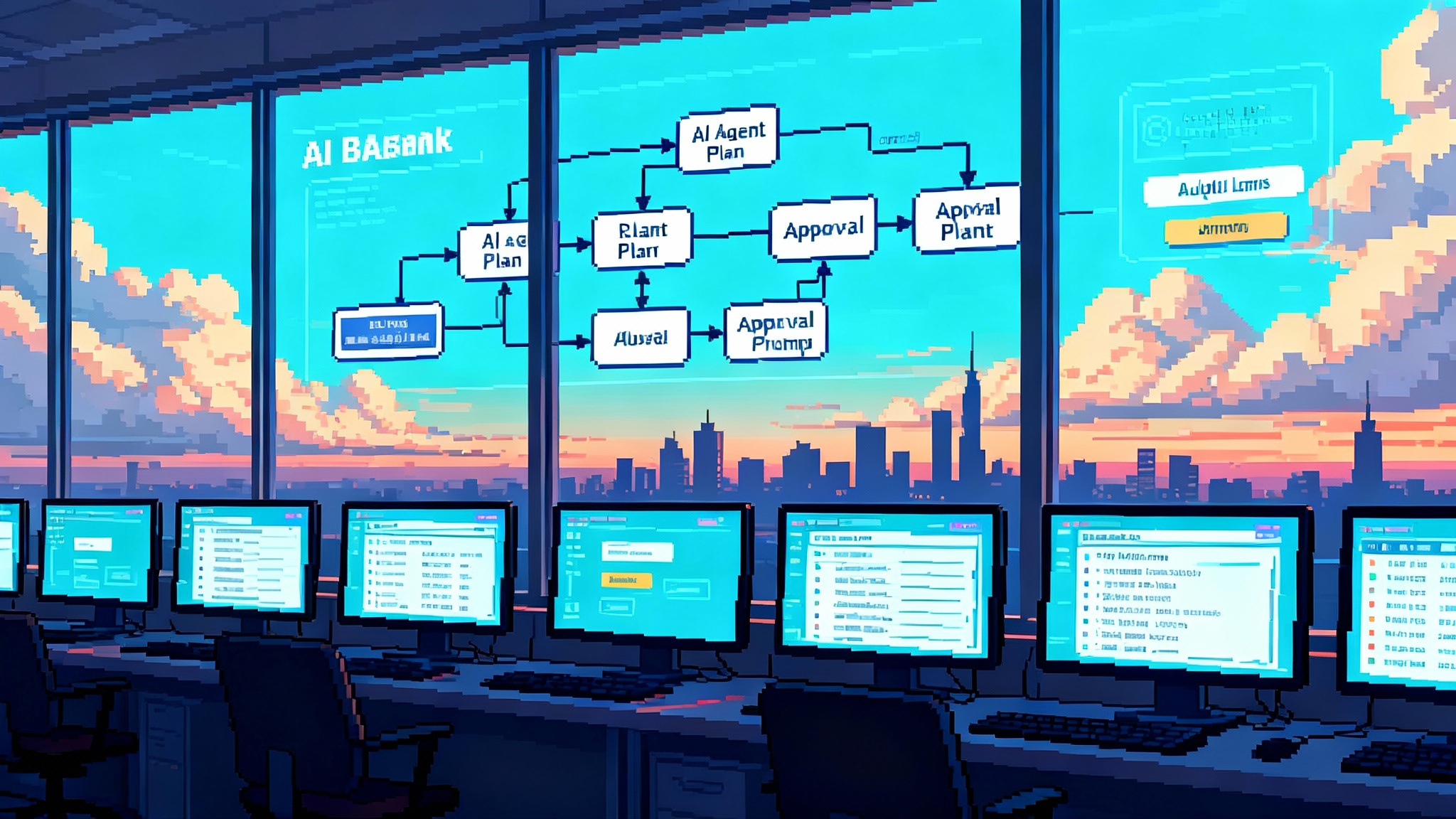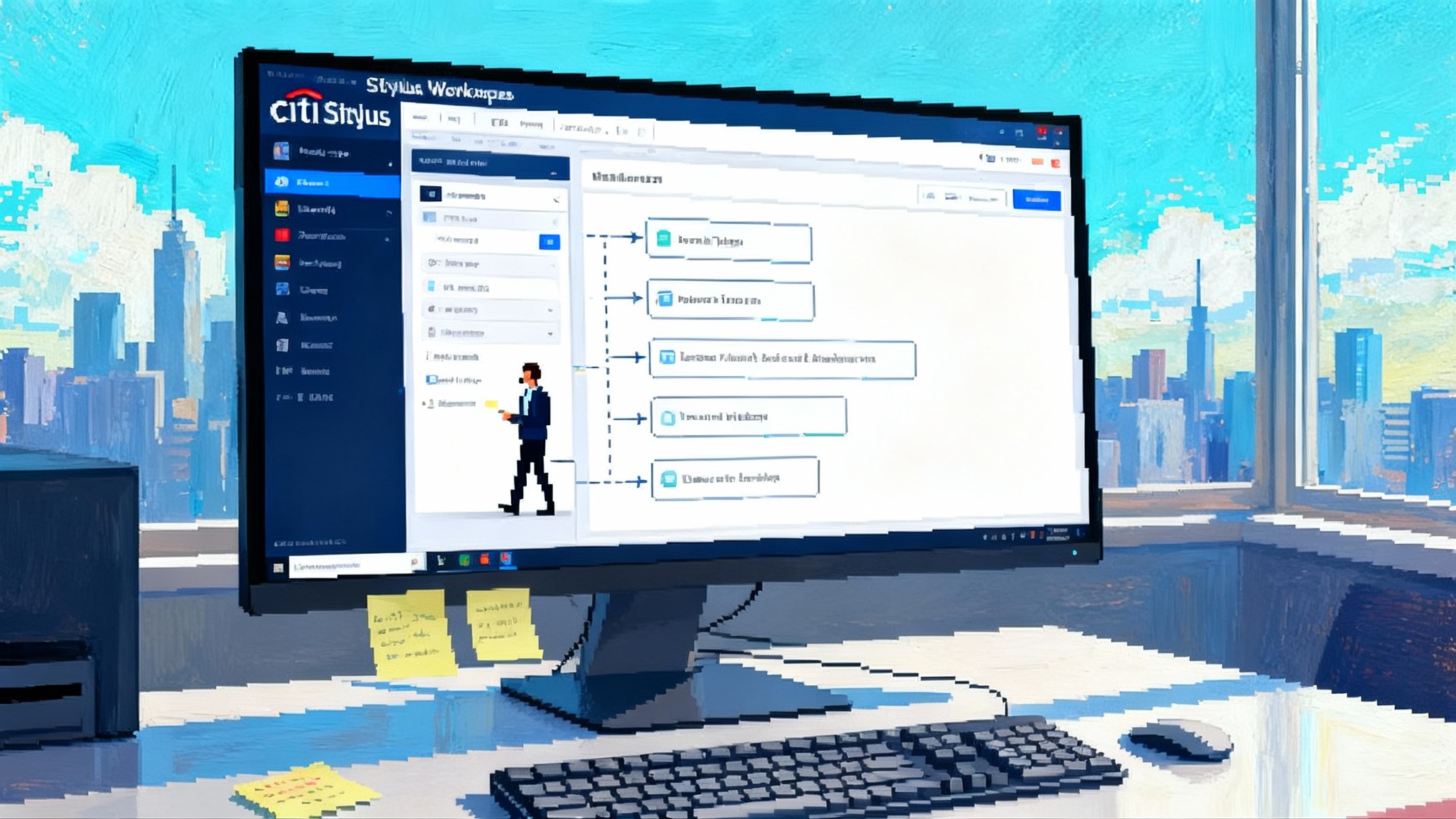AWS lines up Quick Suite to own the enterprise agent stack
AWS is reshuffling leadership ahead of a late September 2025 debut for Quick Suite, a user-facing layer on Amazon Q that unifies runtime, tooling, connectors, and Marketplace into an enterprise AgentOps platform. Here is what is shipping, how it fits together, and a two‑quarter plan to deploy production agents with cost and security controls.

The September shuffle, and why it matters
AWS is making last‑minute leadership moves as it prepares to launch Quick Suite by the end of September 2025. Reporting indicates that Dilip Kumar, long the executive bridge between QuickSight, Q Business, and the new agent effort, is stepping back while Swami Sivasubramanian consolidates agent strategy under a newly formalized remit. The timing sets up a public debut and a clearer chain of command for what AWS expects to be a flagship agent service. If you care about where enterprise AI agents run, how they connect, and who governs the bill, the next few weeks will be pivotal. See the Business Insider report on Quick Suite.
From scattered features to an AgentOps platform
For most of 2024 and early 2025, Amazon Q looked like many assistants: a capable chat UI, some actions, and a growing set of connectors. This year the picture changed. AWS formed a dedicated Agentic AI group, placed it under senior leadership, and started shipping the missing pieces customers need to move from experiments to production. The intent is clear: bundle runtime, tooling, distribution, and connectors into a single, governable stack that lets enterprises build, run, and operate agents at scale. For why this layer matters in competitive terms, see why AgentOps is the moat.
You can already see the outline:
- Runtime and operations: Bedrock is being extended from model hosting to agent runtime and policy enforcement with an agent control plane. AWS is positioning this as a way to standardize tool calling, memory, planning, and evaluation with cloud‑grade security controls.
- Developer tooling: Q Developer moved beyond autocomplete into real agents that read and write files, run commands, and carry multi‑step workflows in the CLI and IDE. Teams can define custom agents with explicit tool permissions, path sandboxes, and prompts, then share them.
- Distribution and ecosystem: Marketplace is being used to package agents and agent tools so procurement, metering, and updates flow through a familiar AWS channel.
- Connectors and interoperability: MCP‑style servers and catalogs turn connectors into first‑class infrastructure, not sidecar scripts. AWS wants any compliant agent client to tap the same set of tools and knowledge with strict identity and traceability.
AWS previewed much of this direction at its New York Summit in July, framing it as a path to deploy and operate production agents, and highlighting new Marketplace surfaces for agents and tools. The keynote showcased MCP resources, including an AWS API MCP endpoint and a managed knowledge server, that make standard connectors feel native to the cloud. Review the AWS agentic AI announcements.
What Quick Suite adds on top of Amazon Q
Quick Suite is best understood as a user‑facing wrap on that platform move. It aims to unify the analyst and operations flow that lives today across QuickSight, Q Business, Q Apps, and a growing collection of actions. Think of it as a workbench where the agent plans multi‑step tasks, pulls analytics, drafts or executes changes in connected systems, and hands off approvals through a console or chat surface. The practical deltas:
- One place to orchestrate agents that can read data, run analyses, and perform actions, all under a single identity and audit plane.
- A workflow primitive, often described as Quick Flows, that gives business users a natural language way to string together steps with guardrails and human approvals.
- Unified connectors that honor row‑level and document‑level permissions, so the same user who sees a slice in QuickSight only gets that slice when the agent acts in Salesforce or ServiceNow.
- Enterprise SSO and policy backed by IAM Identity Center, plus logging into CloudTrail and CloudWatch, so security and platform teams can slot agents into existing reviews without inventing new ones.
If AWS delivers that experience with the polish enterprises expect, Quick Suite becomes the place where agents show their value to business users while Bedrock, Q Developer, and Marketplace handle the build‑run‑operate lifecycle behind the scenes.
Anatomy of the AWS enterprise agent stack
1) Runtime and safety layer
- Bedrock‑based agent runtime that standardizes planning, tool invocation, memory, and function calling across models, including first‑party and partner models.
- Policy constructs that pair identities and resources to tool permissions. Expect scoped credentials, time‑boxed sessions, and model‑specific guardrails that prohibit commands, redact secrets, and filter responses.
- Network boundaries using VPC endpoints and PrivateLink so tool calls and data retrieval do not traverse the public internet. For SaaS actions, use private connectivity where partners support it.
- Observability hooks, namely event streams that trace every tool call and every retrieved document, tied to correlation IDs that follow a task across services.
2) Developer experience and workflows
- Q Developer agents in the CLI and IDE to implement and evolve tools rapidly. Teams can define custom agents per repository with explicit access to file paths, shell commands, and deployment scripts, then check these definitions into version control.
- Chat and console experiences for business users that mirror each other. The same agent that drafts a sales forecast in chat can trigger the same Quick Flow in the console, with approval steps enforced either way.
- Templates for common enterprise workflows like monthly close, customer escalation, incident postmortems, and procurement intake, all parameterized so teams can constrain what the agent is allowed to do.
3) Distribution and procurement via Marketplace
- A category for AI Agents and Tools surfaces third‑party agents, tool packs, MCP servers, and professional services. The advantage is not just discovery, it is that procurement and metering become consistent with the rest of your AWS spend.
- Private Offers let central IT negotiate terms and cap usage for departmental agent subscriptions.
4) Connectors and the MCP pattern
- MCP servers for the AWS API and AWS knowledge base provide two high‑value resources right away. The former makes any MCP‑aware agent an AWS API expert under your IAM policies. The latter keeps documentation and patterns up to date without teams scraping docs.
- Partner MCP servers in Marketplace extend reach into SaaS. The pattern is consistent: an agent discovers tools, declares intents, receives structured results, and every call is auditable.
For a broader industry context on interoperability and runtime choices, see how the browser becomes an agent runtime and how Salesforce frames AgentOps as a durable moat.
Cost governance, finally built in
Agent projects fail for banal reasons, cost sprawl among them. The Quick Suite era hints at three new levers for CFOs and FinOps:
- Per‑user subscription deduplication across properties tied to one identity provider, so a user with access to multiple Q apps counts once at the highest tier. This reduces duplicate seats created by team‑by‑team pilots.
- Tool budgets and execution caps at the agent policy level. For example, allow one agent to call a data warehouse up to a set query cost per day, or limit external API spend per task. Combine this with alerting in CloudWatch and anomaly detection in Cost Explorer.
- Workload placement rules that use cheaper models for exploration, then step up to higher‑capability models only for the final plan and critical actions. In practice, teams standardize a three‑tier model policy per agent: draft, review, commit.
Adopt a monthly agent cost review that mirrors a microservice cost review. The unit is not pods or queues, it is agents and tools. Track cost per completed task and cost per avoided manual hour. Put it in the same deck with business value metrics, for example time to close a ticket or cycle time to draft a quarterly forecast.
Security after a summer of scares
Agent security is broader than model safety. It spans supply chain, identity, data boundaries, and the fallibility of tool invocation. A recent compromise of a popular coding agent extension for Visual Studio Code reminded teams how quickly an ecosystem issue can spread. Even when malicious payloads fail to execute, the incident pattern is instructive.
Here is a practical security checklist for Quick Suite era deployments, informed by the enterprise agent security stack:
- Treat agents like privileged service accounts. Issue short‑lived credentials per task, scoped to the minimal set of tools and resources. Prefer role chaining with session tags over long‑lived keys.
- Sandbox file system and shell tools. In Q Developer, restrict write paths and require explicit human approval before any destructive command. Never let an agent run package managers on production hosts.
- Layer retrieval controls. Use attribute‑based access control for knowledge bases so retrieved snippets inherit user permissions. For SaaS actions, propagate the end‑user identity, not a shared bot account, so downstream audit trails make sense.
- Prompt injection and output handling. Require parsers for tool output. Do not let the agent blindly re‑inject output into subsequent prompts. For external web retrieval, run allow‑listed domains and strip scripts, URLs, and hidden inputs before summarization.
- Observability with intent. Log every tool call with principal, resource, parameters, and result status. Sample full transcripts for high‑risk actions and store them encrypted with scoped access. Make replay mandatory for every Sev‑1.
- Response timeouts and circuit breakers. If a tool exceeds a time or cost threshold, fail safe and ask for human help. For multi‑agent swarms, forbid indefinite loops.
Interoperability versus lock‑in
MCP resources are a promising sign that AWS wants agents to be good citizens outside the AWS garden. An MCP server that exposes the full AWS API and another that exposes AWS knowledge means any MCP‑aware client can plug in. That is genuine interoperability.
Lock‑in will still be a debate. Identity, logging, private networking, and the Marketplace procurement channel create obvious gravity in the AWS direction. Teams that start on AgentCore and Quick Suite will default to AWS‑native tools and models, partly for security and partly for convenience. The healthy posture is to pick your non‑negotiables:
- Standardize on MCP for connectors so you can change the agent client without rebuilding every integration.
- Keep agent prompts, policies, and tool specs in version control, not only in a console. Favor IaC modules that render the same agents across clouds.
- Use a mix of models behind the same agent policies. Prove you can swap a high‑capability model for a peer under a policy without user‑visible change in behavior.
If you do those three things, your day to day will benefit from AWS integration without making a future exit too costly.
How enterprises will deploy production agents at scale
Here is a reference approach you can execute over two quarters. For a real‑world example of scale and governance, study the enterprise agent playbook at Citi.
Phase 1, days 0 to 30
- Establish an Agent Review Board. Include app platform, data, security, and FinOps. Give it explicit authority to approve agent policies and tool inventories.
- Select two high‑value workflows with different risk profiles. Example: finance forecast preparation and support case triage. Define clear success metrics.
- Stand up a dev‑only agent runtime in a dedicated account with least privilege, VPC endpoints, and private connectivity to test systems.
- Build custom Q Developer agents per repository with explicit path constraints and command allow lists. Require peer review for any agent definition change.
Phase 2, days 30 to 90
- Move the two workflows to a staging account. Wire in CloudTrail Lake, CloudWatch metrics, and a security data lake sink for transcripts and tool call logs.
- Instrument cost per task and time saved per task. Tie these to a real stakeholder, for example the support lead and the FP&A lead.
- Onboard Marketplace tools as needed under a Private Offer. Set budget alerts and circuit breakers per tool category.
- Pilot the console and chat experiences for the same agent. Validate that approvals, audit trails, and permissions match in both modalities.
Phase 3, days 90 to 180
- Promote to production with a per‑department rollout plan and weekly safety reviews. Require an executive sponsor for any agent that can write to production systems.
- Add two more workflows, one read‑only analytics, one write‑capable in a downstream SaaS. Expand MCP connectors only after a threat model and a tabletop exercise.
- Implement quarterly agent drift reviews. Confirm that prompts, policies, tool inventories, and cost profiles match what was approved.
What to watch next
- Launch details and packaging. Will Quick Suite be bundled with QuickSight or Q Business seats, or will it be a separate SKU with role‑based tiers, and how will that affect deduplication across apps.
- Model choices and routing. Will AgentCore let you set model policies that route by step, for example plan on a smaller model and act on a larger one, and will AWS attach price transparency to each step.
- Marketplace momentum. Will partners bring MCP servers for the most critical enterprise apps quickly. The first dozen high‑quality connectors will set the tone for interoperability.
- Built‑in evaluation. Expect task‑level evaluation harnesses that turn agent correctness into a first‑class metric. Adoption hinges on trust, and evaluation is how you earn it.
The bottom line
AWS is not just adding another chatbot. It is bundling an AgentOps platform that spans runtime, tooling, distribution, and connectors, and putting a user‑facing suite on top. The September launch window is a forcing function for customers too. If you have been waiting for a cloud‑grade answer to how to run agents in production, the stack is nearly in place. Your job now is to define guardrails, pick workflows that matter, and make cost, security, and evaluation part of the design from day one.








